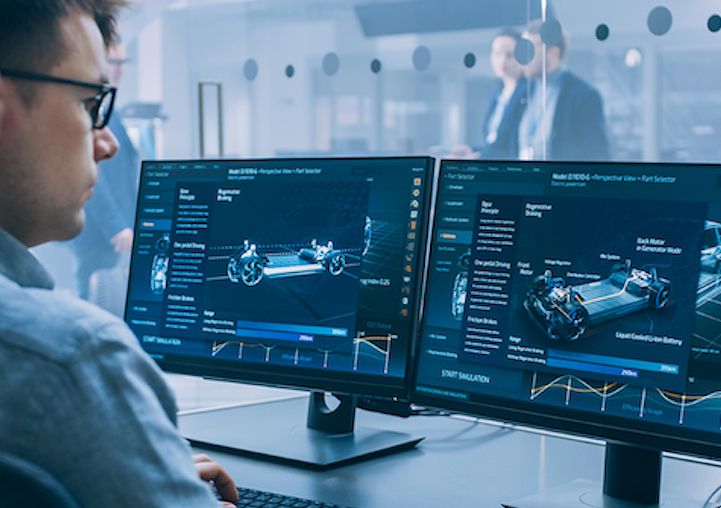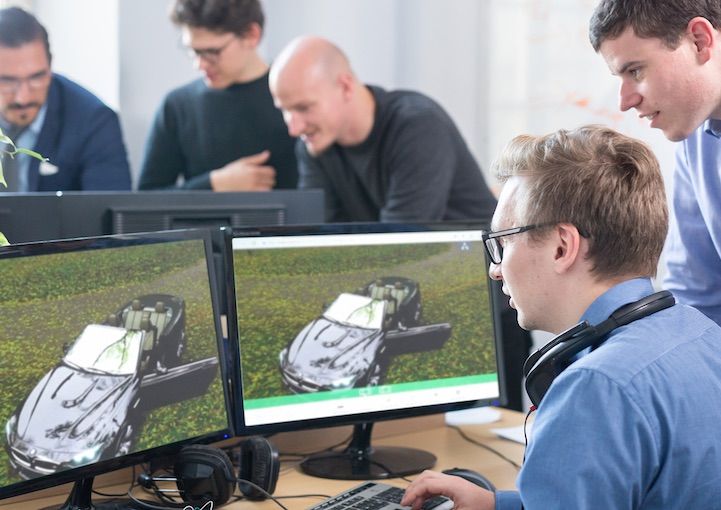INSTANT ON NOW AVAILABLE - Experience Time to first frame as quick as 2 SECONDS
From Prototyping to Production: How Game Engines Streamline the Product Design Process

The product design process has undergone a remarkable transformation in recent years, thanks to powerful game engines. Traditionally, product design involved extensive and costly prototyping. However, game engines now provide designers with tools and technologies that enable them to create 3D models and visualizations of products with unprecedented speed and efficiency. In this blog post, we will explore how game engines, especially when combined with a real-time 3D streaming platform like PureWeb's, revolutionize the product design process, enabling teams to quickly and accurately prototype and iterate on designs.
Improved collaboration
One of the primary benefits of using game engines in product design is the enhanced collaboration they facilitate. A study by Unity Technologies found that 90% of companies using real-time 3D consider it valuable for interdepartmental collaboration. Game engines provide a platform where designers, engineers, and stakeholders can seamlessly work together regardless of their physical location. Through real-time collaboration features, teams can make design changes and instantly see the results. It's crucial to consider how easily these real-time 3D models can be shared.
With PureWeb's real-time 3D streaming platform, collaboration reaches new heights. Designers can stream their interactive 3D environments to collaborators worldwide in real-time, enabling synchronous collaboration without the need for high-performance hardware. This level of collaboration ensures that all team members are on the same page, providing immediate feedback and resulting in faster iteration cycles and better design outcomes.
Faster iteration and visualization
Game engines excel at creating realistic and interactive 3D environments, allowing designers to visualize products in unprecedented ways. By leveraging the power of game engines, designers can rapidly prototype their ideas and explore multiple design iterations.
Designers can not only iterate quickly but also share their virtual prototypes with stakeholders and clients in real-time using a real-time 3D streaming platform. This allows for instant feedback and validation, further accelerating the design process. The ability to see and interact with a product in a virtual environment facilitates better decision-making, as designers and stakeholders can evaluate different design options and assess their viability without physical prototypes. This streamlined design process reduces costs and accelerates time-to-market.
Accurate visualizations
Accurate visualizations are crucial in product design as they help stakeholders better understand the final product before production. Game engines offer high-fidelity graphics and realistic physics simulations, enabling designers to create virtual representations of products that closely resemble the real thing. Leveraging the advanced rendering capabilities of game engines, designers can create product configurators that showcase different materials, textures, and lighting conditions, resulting in more accurate and realistic visualizations.
This level of realism aids in evaluating the aesthetic aspects of the design and also helps identify potential issues and challenges early in the design process. These assets can also be leveraged for sales and marketing efforts.
Reduced costs
Using digital prototypes in product development reduces costs by streamlining the design and testing phases, minimizing the need for physical prototypes. Digital prototypes, created through computer-aided design (CAD) software or 3D modeling tools, allow for rapid iteration and exploration of design concepts before committing to physical production. This eliminates expenses associated with materials, tooling, and manufacturing processes required for physical prototypes. By simulating and validating product functionality, performance, and aesthetics digitally, companies can identify and resolve issues early on, reducing the likelihood of costly design changes during later stages of production.
For the Brose Group, an automobile supply manufacturer, using 3D digital assets resulted in over €500,000 savings in marketing content production costs over 2 years.
Digital prototypes also enable collaboration among teams and stakeholders, facilitating efficient communication and decision-making, further reducing project timelines and associated costs. Leveraging digital prototypes in product development optimizes resource allocation, enhances design quality, and accelerates time-to-market, leading to significant cost savings.
Integration with existing workflows
Game engines seamlessly integrate with existing design workflows, making them an ideal choice for product design. They support various file formats and allow designers to import and export data from popular CAD software and other design tools. For example, Blue Cube Studios recently used Unreal Engine to create a fully immersive 3D experience for an upcoming property development. They plan to Pixel Stream their experience using PureWeb's platform to a broader audience, capturing valuable engagement data and analytics for data-driven decision-making and continuous improvement. Integration with their client's CRM system enhances data management and delivers a seamless experience for clients and sales advisors.
Scalability and accessibility
PureWeb's cloud-based Pixel Streaming and Render Streaming platform for Unreal Engine and Unity models offers unparalleled scalability, making it an ideal companion for streaming game engines in the product design process. As design complexity and the number of concurrent users increase, PureWeb dynamically scales the computing resources required to deliver a seamless streaming experience. This eliminates the need for designers to invest in costly hardware upgrades or worry about performance limitations for themselves and their team.
With PureWeb, designers can confidently push the boundaries of their designs, knowing that the platform can handle the demands of real-time 3D streaming with ease. Moreover, PureWeb's platform enhances accessibility by enabling designers and stakeholders to access and experience the streamed designs on a variety of devices, including desktop computers, laptops, tablets, and even smartphones. This accessibility ensures that collaboration and design review can happen anytime and anywhere, empowering teams to work efficiently and effectively.
Conclusion
Game engine technology, when combined with PureWeb's simple, scalable, and secure real-time 3D streaming platform, revolutionizes the product design process from prototyping to production. The seamless integration of game engines and PureWeb's platform enhances collaboration, accelerates iteration cycles, provides accurate visualizations, ensures scalability and accessibility, and ultimately leads to improved design outcomes and a competitive edge in the industry. By leveraging this powerful combination, businesses can streamline their product design processes, deliver innovative products to market faster, and stay ahead in today's fast-paced and competitive market.
If you are interested in learning more or you have an Unreal or Unity project you want to stream at scale, get in touch.


